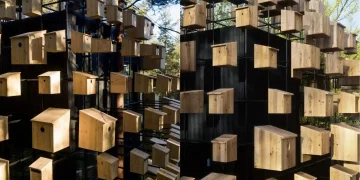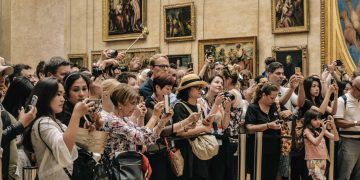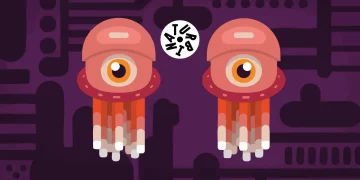Introduction: The Hype Around NFTs
In the last few years, the concept of NFTs (Non-Fungible Tokens) has captured the attention of people across industries, from technology enthusiasts to traditional artists and major corporations. Once a niche idea confined to digital art circles, NFTs have emerged as a major force in the digital economy, often associated with record-breaking sales, celebrity endorsements, and even the establishment of new platforms for creativity and commerce. But what exactly are NFTs, and why have they become such a significant topic of conversation?
This article will delve into the rise of NFTs, examining their potential impact on the digital landscape, particularly for creators and collectors. We’ll explore the underlying technology of NFTs, the way they’re changing the art world, the booming NFT marketplaces, the environmental concerns tied to the technology, and what the future holds for NFTs in the digital economy.
What Are NFTs? Understanding the Basics of Blockchain-Based Assets
At its core, an NFT is a digital asset that represents ownership of a unique item, whether it’s an image, video, audio, or even virtual real estate. The uniqueness of NFTs comes from their non-fungible nature—each token is one-of-a-kind and cannot be exchanged on a like-for-like basis. This differentiates them from cryptocurrencies like Bitcoin or Ethereum, which are fungible and can be exchanged for one another without losing value.
NFTs are built on blockchain technology, primarily using the Ethereum blockchain, though other blockchains like Binance Smart Chain and Flow are also used. The blockchain serves as a decentralized ledger, recording every transaction and verifying the ownership of the token. When someone purchases an NFT, the transaction is recorded on the blockchain, providing a transparent and secure proof of ownership.
To understand the significance of NFTs, consider the example of a digital artwork. Without NFTs, the digital art world has struggled with issues of piracy and copying. Anyone can download an image from the internet, and while the creator may have intellectual property rights, it’s difficult to prove who owns the “original” version of a digital file. NFTs solve this problem by attaching a unique, verifiable ownership claim to the digital asset, allowing creators to retain a sense of authenticity in an otherwise easily replicable medium.
NFTs in Art: Revolutionizing the Art World with Digital Ownership
NFTs have sparked a revolution in the art world, particularly for digital artists. Prior to the advent of NFTs, the idea of truly owning digital art was complicated. Reproduction was easy, and while artists could sell digital files, there was no way to establish ownership or scarcity. NFTs have given digital creators the ability to mint their artwork as unique tokens that can be bought, sold, and traded in a way similar to physical art.
The famous case of Beeple’s digital artwork “Everydays: The First 5000 Days” highlights how NFTs have disrupted the traditional art market. In March 2021, the piece sold for $69.3 million at a Christie’s auction, making Beeple one of the most expensive living artists at the time. This sale was seen as a watershed moment for NFTs, demonstrating their potential to not only provide financial rewards for creators but also to legitimize digital art as a valid form of high-value artistic expression.
NFTs have democratized access to the art world. Artists from around the globe can now reach a global audience through online marketplaces, bypassing the need for traditional galleries and auction houses. Moreover, NFTs offer an opportunity for creators to earn royalties on secondary sales of their works. This is a key distinction from the physical art market, where artists often see no financial benefit once their piece is sold for the first time.
However, the shift toward NFTs hasn’t been without controversy. Critics argue that NFTs may devalue the art world, reducing artistic expression to a mere commodity and encouraging speculation over genuine appreciation of the art itself. Others question the authenticity of NFT art, suggesting that the novelty of owning a digital file doesn’t carry the same weight as owning a physical, tangible work of art. Despite these criticisms, NFTs continue to thrive in the art world, and many digital artists have embraced them as a new medium for both creative expression and financial gain.

NFT Marketplaces: Where to Buy, Sell, and Auction NFTs
NFT marketplaces are the digital platforms where creators mint, list, and sell their NFTs, while collectors browse, bid on, and purchase them. These platforms have become a critical component of the NFT ecosystem, and their popularity has surged in line with the growing interest in NFTs themselves.
Some of the most well-known NFT marketplaces include OpenSea, Rarible, SuperRare, and Foundation. Each platform caters to different types of content creators, ranging from visual artists to musicians to virtual world developers. OpenSea is the largest and most popular marketplace, hosting a wide variety of NFTs across different categories, including art, music, virtual real estate, and gaming assets. SuperRare, on the other hand, focuses exclusively on high-quality digital art, offering a more curated experience for both artists and collectors.
The process of buying and selling NFTs typically involves a few key steps. First, creators “mint” their digital artwork, which means they upload the file and create a corresponding NFT on the blockchain. Buyers then browse through these listings, place bids, or purchase NFTs directly. Once a sale is completed, the NFT is transferred to the buyer’s wallet, and the blockchain records the transaction. The buyer now has ownership of the digital asset, and the creator receives compensation for the sale.
NFT marketplaces also facilitate auctions, where buyers can place bids on NFTs, often driving up prices through competition. These auctions are an integral part of the NFT ecosystem, as they allow collectors to acquire rare or highly sought-after items while providing artists with an additional way to monetize their work.
While the ease of access and transparency of NFT marketplaces have contributed to their rapid growth, they have also led to some challenges. For example, the rapid proliferation of NFTs has led to concerns over market saturation, with some artists and collectors worried that the NFT space may become overcrowded, making it harder to distinguish valuable works from less significant ones. Additionally, the anonymity of transactions on these platforms has led to concerns about copyright infringement, as it’s difficult to track down creators of unauthorized works.
How NFTs Are Changing the Digital Landscape: Opportunities for Creators and Collectors
NFTs have opened up a new world of opportunities for both creators and collectors, giving them unprecedented freedom and flexibility in how they create, distribute, and monetize digital content.
For creators, NFTs offer a direct way to earn money from their work without relying on intermediaries such as galleries, auction houses, or record labels. Musicians, for instance, can sell music NFTs, allowing them to bypass traditional music distribution platforms and retain full control over their earnings. Similarly, game developers can create and sell in-game items as NFTs, providing a new avenue for monetization and opening up the possibility of cross-platform virtual economies.
NFTs also provide creators with a sense of security by ensuring that their works are verifiably unique and protected by blockchain technology. The transparency of blockchain records helps to prevent fraud and ensure that creators are fairly compensated for their work.
For collectors, NFTs represent a new and exciting way to engage with digital art and other unique digital assets. In addition to the potential for financial gain, collectors may find value in owning rare or culturally significant works of art, digital memorabilia, or virtual real estate. The rise of virtual worlds and the metaverse has further expanded the possibilities for NFT ownership, with individuals now able to purchase and trade virtual properties and assets in digital spaces.
However, with the opportunities come risks. The NFT market can be highly speculative, with prices fluctuating dramatically based on demand, trends, and perceived value. Collectors may find themselves facing losses if the value of their NFTs drops, or if the marketplace collapses. Additionally, the lack of regulation in the NFT space has raised concerns about fraud, scams, and the authenticity of some works.
Environmental Impact: Addressing Concerns About Energy Consumption
One of the most significant concerns surrounding NFTs is their environmental impact. Many NFTs are built on the Ethereum blockchain, which uses a proof-of-work (PoW) consensus mechanism. PoW requires miners to solve complex mathematical puzzles to validate transactions, consuming a substantial amount of energy. As a result, the energy consumption of the Ethereum network has been a subject of debate, with some critics arguing that NFTs contribute to global warming and environmental degradation.
The environmental impact of NFTs became particularly evident during periods of high market activity, when the number of transactions and gas fees (transaction costs) surged. This created a backlash against NFTs, with environmental activists and climate-conscious consumers calling for more sustainable alternatives.
In response to these concerns, there has been a push within the blockchain community to transition from proof-of-work to proof-of-stake (PoS), a more energy-efficient consensus mechanism. Ethereum, for example, successfully switched to PoS with the “Merge” upgrade in 2022, which significantly reduced its energy consumption.
Other blockchains, such as Flow and Tezos, have also emerged as environmentally friendly alternatives for NFT transactions, offering lower energy consumption and reduced environmental impact. While the shift toward more sustainable blockchain technologies is still ongoing, it’s clear that the NFT community is beginning to take environmental concerns seriously.
Conclusion: The Future of NFTs in the Digital Economy
NFTs have undoubtedly transformed the digital economy, creating new opportunities for artists, creators, and collectors while also introducing challenges that need to be addressed. The rise of NFTs has revolutionized the art world, giving digital creators the ability to monetize their work in innovative ways, while also providing collectors with the chance to invest in unique digital assets.
As NFTs continue to evolve, the technology behind them will likely become more refined, and the market will become more regulated. Environmental concerns will also play a significant role in shaping the future of NFTs, with ongoing efforts to make the technology more sustainable and energy-efficient.
The future of NFTs in the digital economy is still unfolding, but one thing is
clear: they have the potential to reshape industries, from art and entertainment to gaming and virtual real estate. Whether they will continue to thrive or experience a market correction remains to be seen, but the rise of NFTs has undoubtedly marked a pivotal moment in the intersection of technology, creativity, and commerce.


















































Discussion about this post